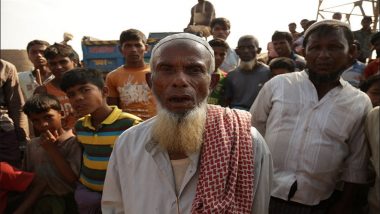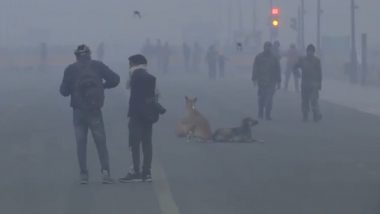New Delhi, March 9: As the sun sets over the charred ruins of what was a bustling neighbourhood till only two weeks ago and the shadows lengthen into night, panic escalates in northeast Delhi's riot-scarred locality of Shiv Vihar. “Call everybody. It's time to leave,” Mohammed Nafis calls out urgently to his 14-year-old nephew Saif, asking him to gather the family so they can leave their 'homes' to return to the houses of their relatives where they have found temporary refuges.
He is not the only one. Two Mondays ago, the lives of thousands of people across northeast Delhi were upended when the city's worst riots since 1984 claimed 53 lives. At least 200 people were injured, many hundreds displaced and businesses destroyed in the riots that began on February 24 and continued till February 26. Delhi Violence: Rs 10 Lakh Compensation For Houses Totally Burnt, Rs 5 Lakh For Charred Schools With 1000 Students Enrolled, Announces AAP Govt.
And now, the twilight hour brings with it mounting fear that the violence will be repeated. Residents rush to leave the area that has been their home for over a decade. "We are too scared to spend the night here. One never knows what can happen,” Nafis, who had a car seat cover workshop, told PTI.
The 41-year-old and 14 other members of their family occupied a three-storey house in gully no. 12 in phase 7 of Shiv Vihar until two weeks ago, when the locality fell prey to a wave of riots. Like his, many properties in the area were ransacked and looted before being set on fire.
Those affected by the violence have either taken shelter at government relief camps or moved to their relatives' houses. They now come back every morning to take stock of the damage, and return to their temporary accommodations at the first sign of darkness.
Young Saif, who missed his Class 8 final exams because of the violence, starts at the sound of an approaching bike and said he is too scared to walk the lanes in which he grew up. “I am scared to take that lane. That is where they (rioters) came from. What if they come back again?” he asked, pointing to a narrow lane.
All the doors in the area are wide open -- evidence of the lawless mobs that roamed unchecked. Mohammad Gayur's two-storey house has also been reduced to ruins. Three bikes on the ground floor were burnt, cylinders were blasted on the floor above, making the roofs of two of the three rooms collapse. His three goats were stolen.
“We were traumatised. So when police came to evacuate us early morning on February 26, we left immediately. I didn't even wear my slippers. I was so scared. When we came back the next afternoon, everything was destroyed. "We don't know when we will come back. It will take at least three-four years to get back our lives,” said Gayur, who makes a living doing odd contractual jobs like painting walls.
He lived in the house with his mother, three brothers and their families. Following the violence, the men of the house have moved to a cousin's house in Mustafabad close by, while the women and children have taken shelter at the Idgah relief camp.
Nazar Mohammad, who relocated to his in-laws' house in Chaman Park a few kilometres away with his wife and three sons during the riots, said his oldest child (12) has simply refused to come back to Shiv Vihar. “During the violence, we had taken shelter in another house nearby. Although two of my sons are too young to register what happened, my oldest has been left traumatised,” said the 44-year-old art teacher.
“He has declared he is not going to come back,” his wife Irshada Begum added. The thought of returning is terrifying even for those whose houses were not rendered completely uninhabitable. Like Saimur Khan (42), who keeps the doors of his house wide open during the day, hoping that the visible destruction -- furniture destroyed, clothes strewn across the floor and suitcases, safes and almirahs ransacked — will get him some help from either the government or NGOs that are offering relief.
At the first sign of dusk, he is quick to lock up his house, and return to his in-laws' place in nearby Babunagar. “The environment here is still very uncertain. I come here in the morning so I can get some help because we lost everything. "But I don't think I am ready to come back yet,” he said simply.
Over 700 cases have been filed, and nearly 2,400 people have either been detained or arrested. In a statement earlier this month, Delhi Deputy Chief Minister Manish Sisodia said 79 houses and 327 shops were completely gutted in arson during the violence.













 Quickly
Quickly





















